 When planning an accessible trail, user experience must be the first consideration. All Persons Trails provide opportunities for all visitors to experience the trail and access landscapes, unique features, viewpoints and multi-sensory elements.
When planning an accessible trail, user experience must be the first consideration. All Persons Trails provide opportunities for all visitors to experience the trail and access landscapes, unique features, viewpoints and multi-sensory elements.
Jump to section
1. DISTANCE
- When designing an All Persons Trail, consider a loop that connects a variety of features and viewpoints.
- To be as inclusive as possible, consider distance, turn-around points, and the benefit of loop trails that allow users to return to the start without requiring a turn-around.
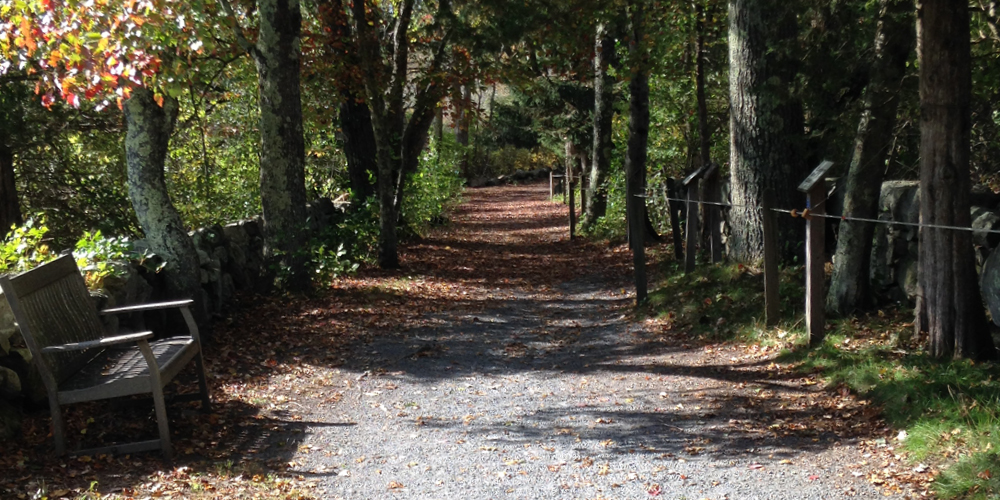
Stony Brook, Mass Audubon Wildlife Sanctuary, Massachusetts, USA. Photo credit: Trisha Kaplan
2. TERRAIN
- To allow use by the greatest number of people, a firm and stable surface is important, such as asphalt, concrete, compacted crushed aggregate, rubber or boardwalk.
- Minimize cracks, holes, bumps and roots; any wooden planks should be placed horizontally across the trail, rather than vertically along the trail.
- Choose surface material that requires minimal maintenance.
- Develop a maintenance plan to ensure the surface remains clear and free from loose material.
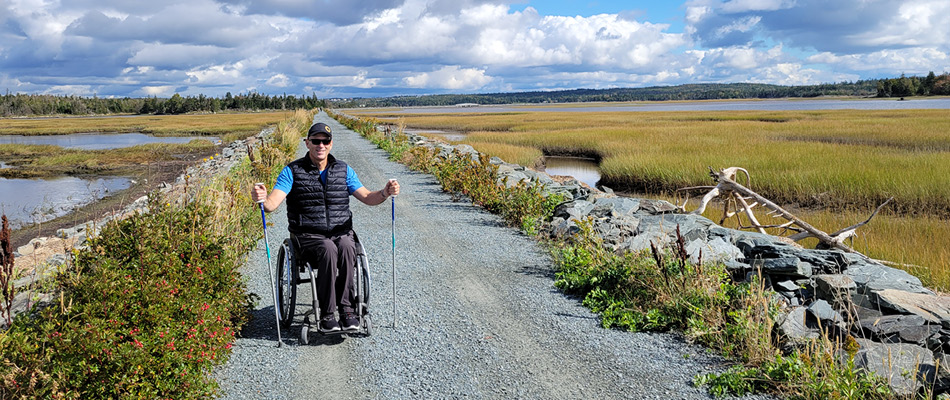
The Salt Marsh Trail, Cole Harbour, Nova Scotia, features a wide, hardpacked gravel surface.
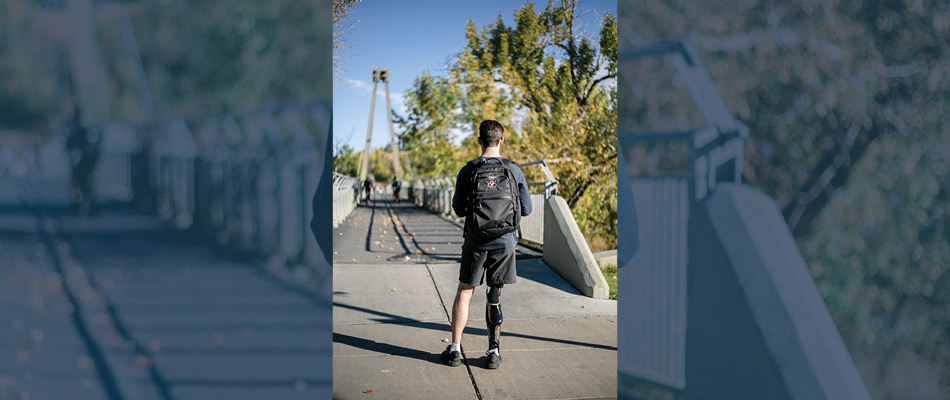
This section of the Bow River Pathway, Calgary, Alberta, is paved with smooth transitions between the trail and the bridge. Photo credit: Alexa Fernando.

This section of trail in Sault Ste. Marie, Ontario, uses brick to create a firm, stable surface.
3. GRADE
- Minimal grade is recommended, preferably under 5%.
- If longer sections of steeper slopes are necessary, consider adding flat rest areas with seating along the slope.
- A 2-degree cross-slope remains accessible while providing adequate drainage to avoid water pooling on the trail.
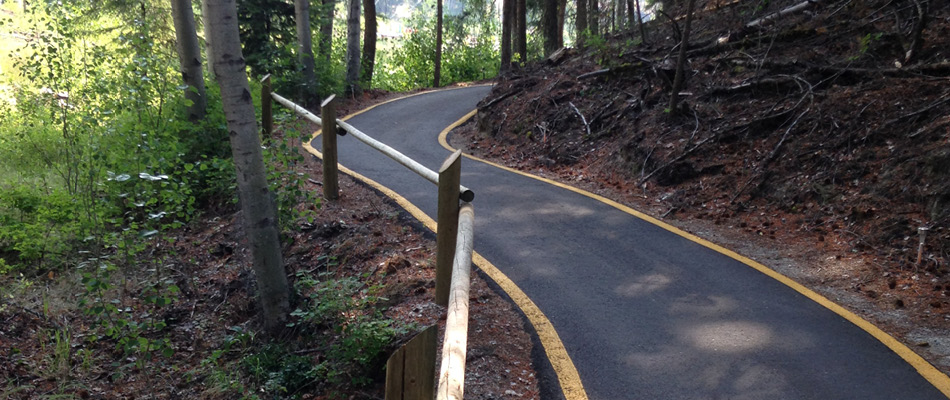
The trail at Agur Lake Camp Summerland, British Columbia, features accessible, paved trails with low grade changes and colour contrasting along the edge. Photo credit: Trisha Kaplan.
4. TRAIL WIDTH
- Clear width should be free from obstructions.
- Plan for enough space for two users with wheelchairs to pass each other.
- Consider space for service animals.
- Remember that electric wheelchairs require more space than manual wheelchairs.
- If narrower sections are needed, add passing spaces at regular intervals.
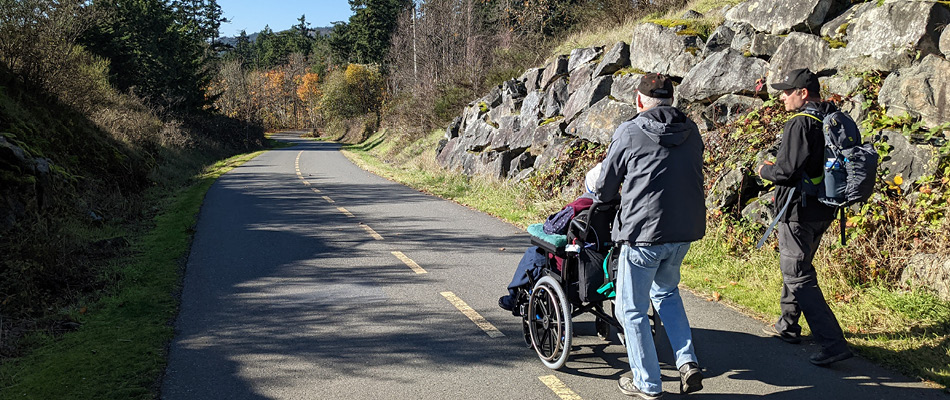
The Galloping Goose Trail, Victoria, British Columbia, offers plenty of space for passing trail users with wheelchairs.
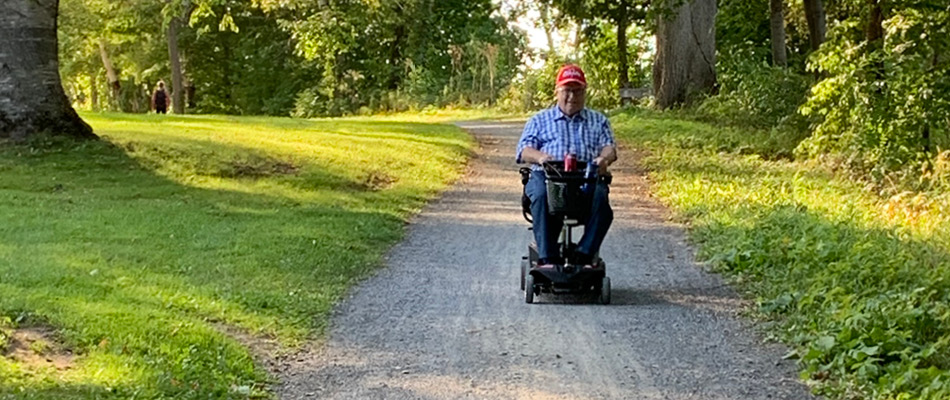
This trail in Quispamsis, New Brunswick, is an example of a wide, hard-packed gravel surface that is still accessible.
5. OBSTACLES & PROTRUDING OBJECTS
- Help keep trail users safe by avoiding these common obstacles:
- Tread obstacles that interrupt the evenness of the trail surface, including rocks, roots, cracks and ruts.
- Vertical obstacles such as trees, shrubs or signage.
- Other objects, such as benches, planters and bike racks can create a barrier. Keep this in mind when planning the placement of objects along the trail and remember to keep them off the path of travel.
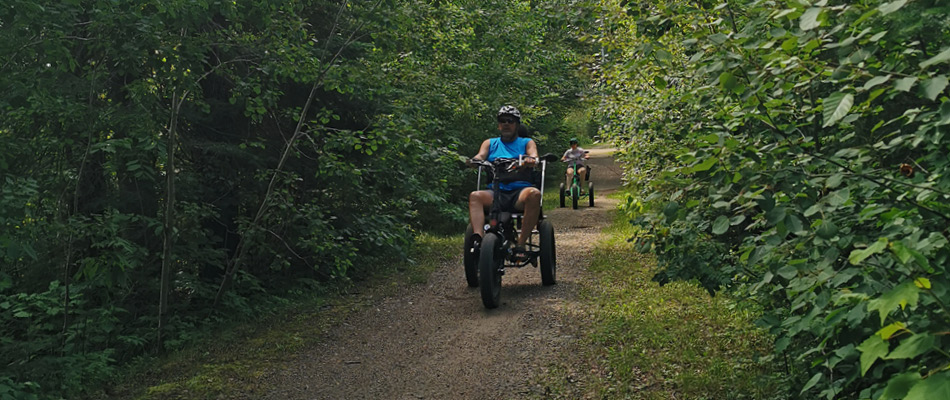
A clear trail free from any obstacles, such as this one in Falcon Lake, Manitoba, ensures that all visitors can access trails safely.

This trail in Morning Mountain Regional Park, British Columbia, has a clear width and vertical clearance.
6. BOARDWALKS
- If the boardwalk is long, consider making it wide enough to allow two people using electric wheelchairs to pass easily or create passing spaces at regular intervals.
- Ensure that the approach to the boardwalk has an even surface with no steps, gaps or openings.
- Use firm, non-slip materials whenever possible.
- Provide edge protection along all boardwalks, bridges and lookouts.
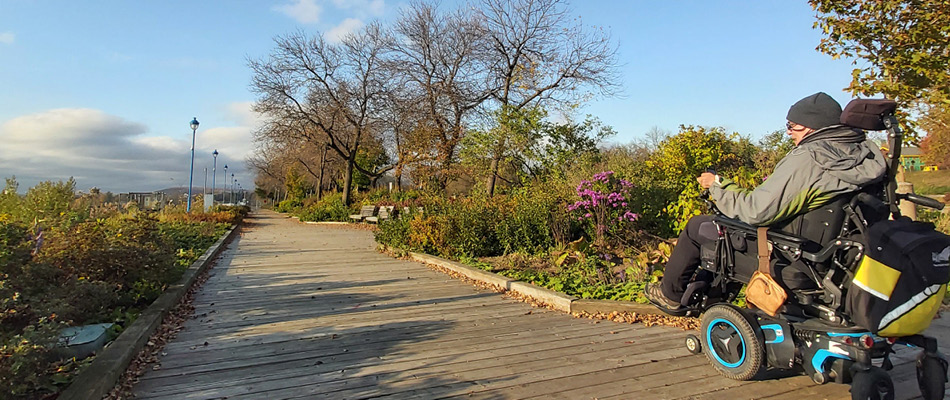
The Voyageur Cycling Route, North Bay, Ontario is wide and clear, with edge protection and minimal cracks between wooden planks.





